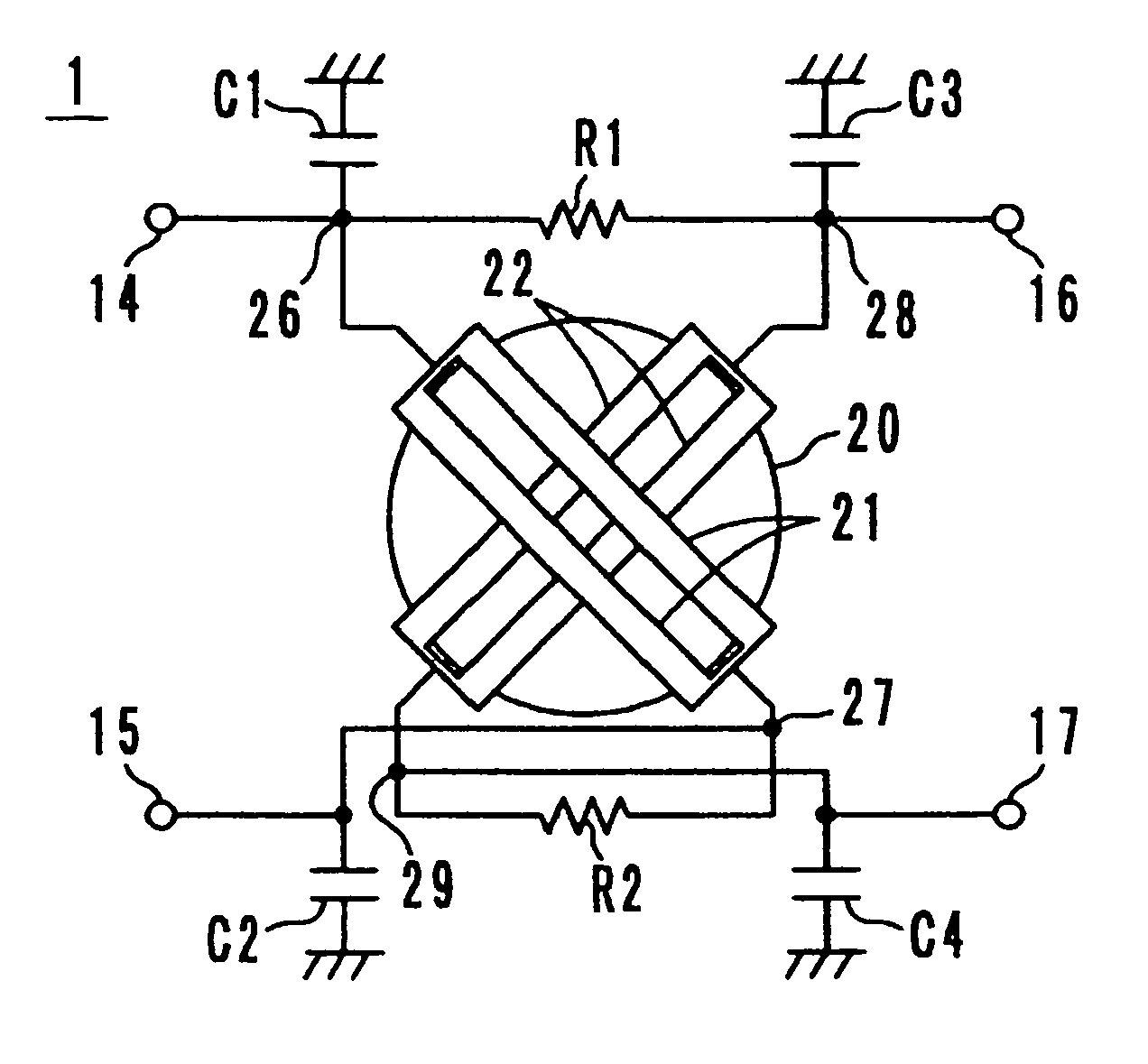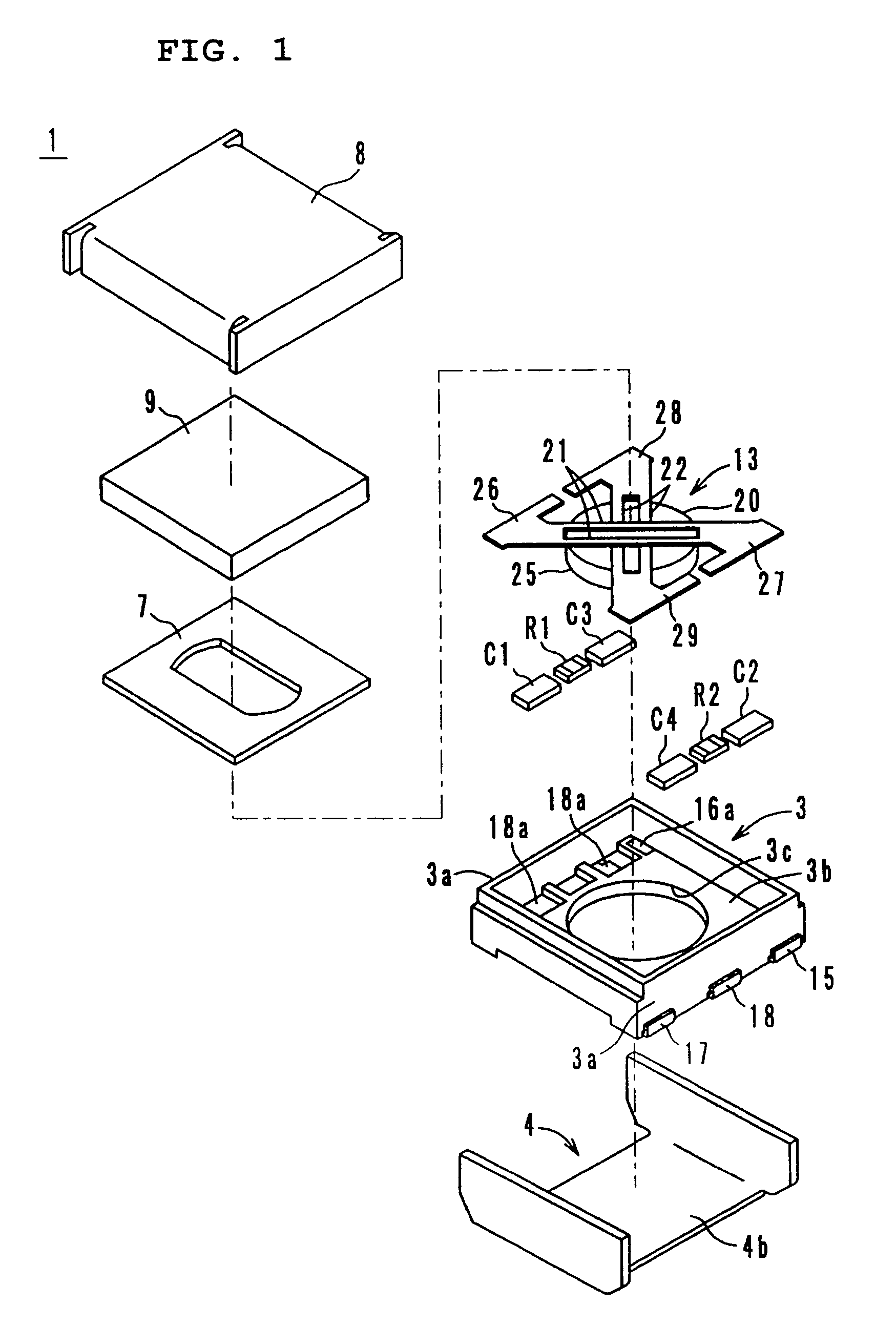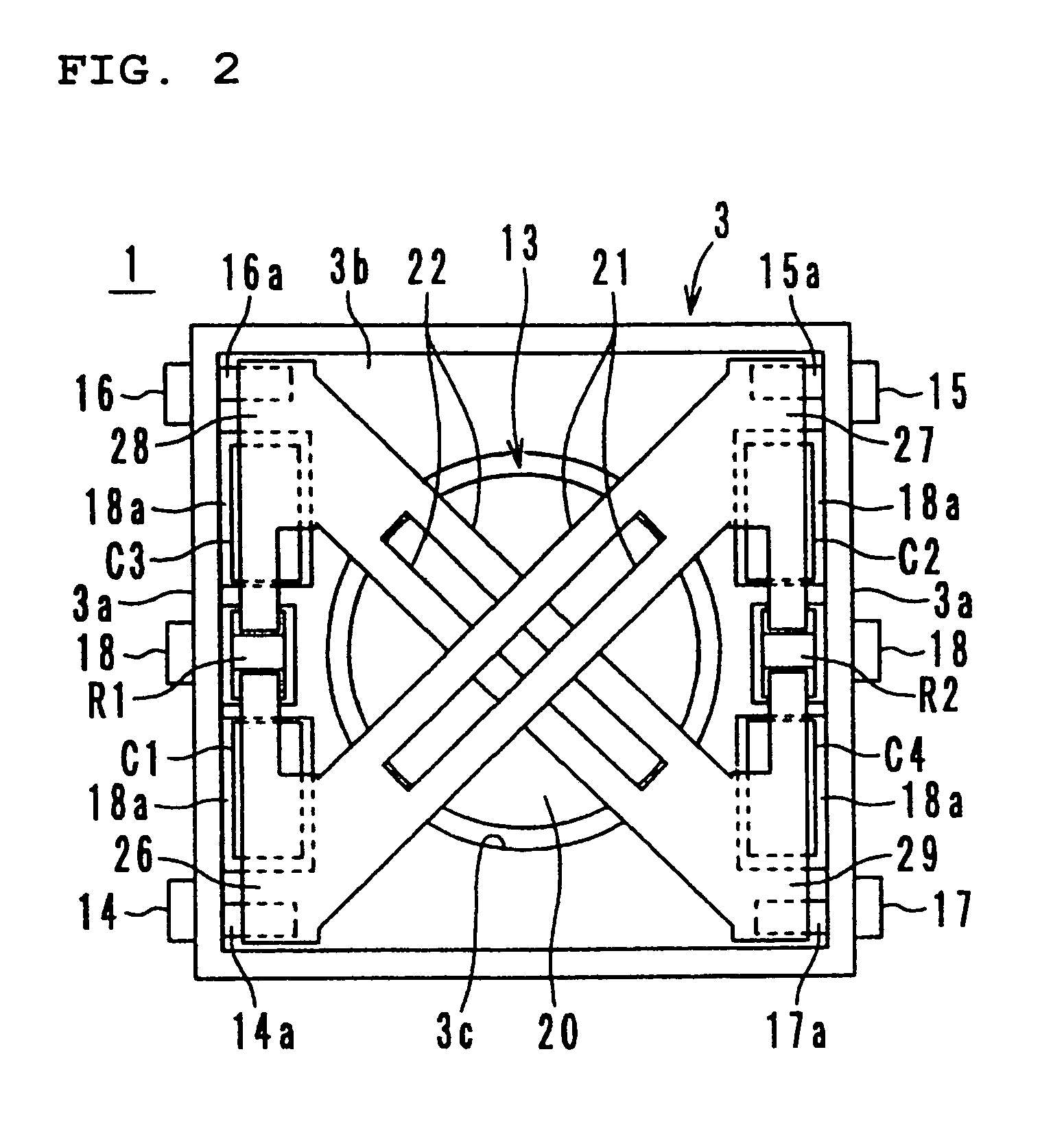Two-port non-reciprocal circuit device, composite electronic component, and communication apparatus
a non-reciprocal circuit and circuit technology, applied in waveguide devices, basic electric elements, electrical devices, etc., can solve the problems of unbalanced input and output terminals, increased size and cost of devices, and inability to connect to a balanced circuit, etc., to achieve excellent stability and load regulation, power load efficiency and output distortion
- Summary
- Abstract
- Description
- Claims
- Application Information
AI Technical Summary
Benefits of technology
Problems solved by technology
Method used
Image
Examples
first preferred embodiment
[0037]As shown in FIG. 1, a two-port isolator 1 according to a first preferred embodiment of the present invention preferably includes a metallic lower case 4, a resin terminal case 3, a central electrode assembly 13, a metallic upper case 8, a permanent magnet 9, an insulating member 7, resistors R1 and R2, and matching capacitors C1 to C4.
[0038]The metallic lower case 4 and the metallic upper case 8 are preferably made of a ferromagnetic material, such as soft iron, so as to form a magnetic circuit. The surface thereof is preferably Ag-plated or Cu-plated so as to improve an insertion loss characteristic. The insulating member 7 preferably includes a dielectric material, such as LCP (liquid crystal polymer), PPS, PBT, PEEK, or epoxy resin, or other suitable material.
[0039]In the central electrode assembly 13, a first central electrode 21 and a second central electrode 22 are arranged on the upper surface of a disc-shaped microwave ferrite member 20, such that the electrodes cross ...
second preferred embodiment
[0058]A two-port isolator 41 of a second preferred embodiment preferably includes a central electrode assembly 43 shown in FIG. 5.
[0059]The central electrode assembly 43 preferably includes a microwave ferrite member 44, which is preferably substantially parallelogram-shaped in a plan view, and central electrodes 45 and 46, which are conductive wires covered with an insulating material. The conductive wires are wound on the surface of the ferrite member 44 such that they cross each other at substantially right angles. More preferably, the shape of the ferrite member 44 is preferably substantially quadrangular (approximately square or approximately rectangle) or substantially rhombic. Alternatively, a substantially circular shape may be adopted.
[0060]As the conductive wires, copper wires or silver wires may be used. Alternatively, steel wires may be coated with gold, silver, or copper. The cross section of the conductive wire may be substantially circular or substantially rectangular...
fifth preferred embodiment
[0068]As shown in FIG. 8, a two-port isolator 71 preferably includes a metallic case having a metallic lower case 74 and a metallic upper case 78, a permanent magnet 79, a central electrode assembly 90 and a substantially rectangular laminated substrate 100 having terminator resistors R1 and R2 and matching capacitors C1 to C4.
[0069]In the central electrode assembly 90, two pairs of central electrodes 91 and 92 are arranged on the upper surface of a microwave ferrite member 93, which is preferably substantially rectangular-shaped when viewed in a plan view, such that the central electrodes 91 and 92 cross each other at substantially right angles and an insulating layer (not shown) is provided therebetween. In the fifth preferred embodiment, each of the central electrodes 91 and 92 includes two lines.
[0070]The central electrodes 91 and 92 may be bonded to the ferrite member 93 by using a copper foil, or may be provided by printing a conductive paste including Ag, Au, Ag—Pd, or Cu on ...
PUM
 Login to View More
Login to View More Abstract
Description
Claims
Application Information
 Login to View More
Login to View More - R&D
- Intellectual Property
- Life Sciences
- Materials
- Tech Scout
- Unparalleled Data Quality
- Higher Quality Content
- 60% Fewer Hallucinations
Browse by: Latest US Patents, China's latest patents, Technical Efficacy Thesaurus, Application Domain, Technology Topic, Popular Technical Reports.
© 2025 PatSnap. All rights reserved.Legal|Privacy policy|Modern Slavery Act Transparency Statement|Sitemap|About US| Contact US: help@patsnap.com



